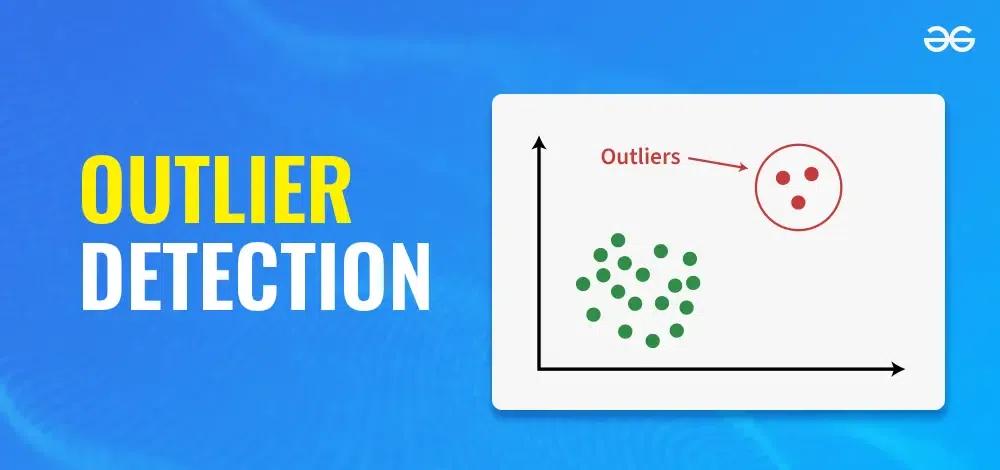 Posted On
Posted On
Handling Outliers in SQL: Statistical Techniques for Identifying and Managing Anomalies
 Posted On
Posted On
One of the common challenges data analysts face when working with large datasets in SQL is identifying and managing outliers. Outliers are data points that deviate significantly from other observations, and they can distort statistical analyses, leading to misleading conclusions. Effectively handling outliers is critical for ensuring the accuracy and reliability of data-driven insights. This article will explore statistical techniques for identifying and managing outliers in SQL while incorporating key concepts often covered in a data analyst course in Pune.
What Are Outliers and Why Are They Important?
Outliers are data points that lie significantly outside the range of the rest of the data. These points can arise due to errors in data entry or measurement variations or represent rare occurrences that could be interesting for specific analysis. In either case, their presence can impact the integrity of your analysis. For instance, an outlier can skew the mean, inflate variance, and lead to incorrect inferences. Data analysts who are well-versed in a data analyst course understand that outliers must be managed appropriately to ensure the robustness of statistical conclusions.
Identifying Outliers Using SQL
Before managing outliers, they first need to be identified. SQL provides a variety of methods for spotting anomalies in datasets. One common approach uses statistical techniques such as the interquartile range (IQR) or standard deviation. To identify outliers, SQL queries can be written to calculate these statistics and filter out the values that fall beyond acceptable thresholds.
- Interquartile Range (IQR) Method
The IQR is a measure of statistical dispersion calculated by subtracting the 25th percentile (Q1) from the 75th percentile (Q3) of a dataset. Data points that fall below Q1 – 1.5 * IQR or above Q3 + 1.5 * IQR are often considered outliers. SQL can be used to calculate these quartiles and identify potential outliers using the following query structure:
WITH percentiles AS (
SELECT
PERCENTILE_CONT(0.25) WITHIN GROUP (ORDER BY value) AS q1,
PERCENTILE_CONT(0.75) WITHIN GROUP (ORDER BY value) AS q3
FROM your_table
)
SELECT *
FROM your_table, percentiles
WHERE value < (q1 – 1.5 * (q3 – q1)) OR value > (q3 + 1.5 * (q3 – q1));
By learning such methods in a data analyst course, analysts effectively gain hands-on skills in filtering outliers.
- Standard Deviation Method
Another common technique to detect outliers is the standard deviation method. Data points with more than 2 or 3 standard deviations from the mean are typically considered outliers. This method assumes that the data follows a normal distribution, and large deviations indicate that a data point is likely an anomaly. In SQL, the standard deviation can be calculated and used to filter outliers with the following query:
WITH stats AS (
SELECT
AVG(value) AS mean,
STDDEV(value) AS stddev
FROM your_table
)
SELECT *
FROM your_table, stats
WHERE value > (mean + 3 * stddev) OR value < (mean – 3 * stddev);
A solid foundation in a data analytics course would help a professional master such techniques, as understanding statistical methods is crucial for accurate data analysis.
Managing Outliers: Handling Techniques
Once outliers are identified, the next step is determining how to manage them. Depending on the context and the nature of the data, there are several ways to handle outliers in SQL.
- Removing Outliers
One straightforward approach is to remove outliers entirely from the dataset. While this method effectively ensures that statistical analyses are not skewed, it may not always be appropriate if the outliers contain valuable information. Data analysts learn in a data analyst course in Pune to weigh the pros and cons of removing outliers in specific scenarios. The SQL code for removing outliers using the IQR method might look like this:
WITH percentiles AS (
SELECT
PERCENTILE_CONT(0.25) WITHIN GROUP (ORDER BY value) AS q1,
PERCENTILE_CONT(0.75) WITHIN GROUP (ORDER BY value) AS q3
FROM your_table
)
DELETE FROM your_table
WHERE value < (SELECT q1 – 1.5 * (q3 – q1) FROM percentiles)
OR value > (SELECT q3 + 1.5 * (q3 – q1) FROM percentiles);
Analysts can ensure that extreme values do not influence their models and analyses by removing outliers. However, this method requires a deep understanding of the data, which is emphasised in a data analyst course in Pune.
- Capping Outliers (Winsorizing)
In cases where retaining the outliers is essential for some analytical purpose, capping the extreme values can be an effective strategy. Capping involves replacing extreme outliers with a predefined threshold value, such as the dataset’s maximum or minimum non-outlier value. This approach prevents outliers from distorting statistical measures while preserving their presence.
WITH stats AS (
SELECT
MIN(value) AS min_val,
MAX(value) AS max_val
FROM your_table
)
UPDATE your_table
SET value = (SELECT min_val FROM stats)
WHERE value < (SELECT min_val FROM stats);
Transformation Techniques: Log or Square Root Transformation
Another approach for handling outliers is through data transformation. If outliers are due to skewed data, applying mathematical transformations like a log or square root transformation can help bring the data back into a normal distribution. SQL can be used to perform these transformations:
UPDATE your_table
SET value = LOG(value + 1);
Such transformations are part of any data analyst’s toolkit and are often covered comprehensively in a data analyst course in Pune.
The Role of Data Visualisation
Data visualisation is an essential tool for detecting outliers. While SQL queries can identify outliers programmatically, charts like boxplots, histograms, or scatter plots can visually represent anomalies. Many SQL databases can integrate with data visualisation tools such as Tableau or Power BI, which makes it easier for analysts to spot trends and outliers at a glance.
Conclusion
Effectively handling outliers is crucial for maintaining the integrity of any data analysis. Using SQL for statistical techniques like the IQR method or standard deviation helps analysts identify anomalies efficiently. Additionally, managing outliers through removal, capping, or transformation ensures that extreme values do not distort analyses and models. Data analysts who complete a data analysis course in Pune are equipped with the necessary skills to deal with outliers, ensuring that their data analyses are both accurate and insightful. As the demand for skilled analysts grows, mastering the art of handling outliers will remain vital to any data analyst’s skill set.
Business Name: ExcelR – Data Science, Data Analytics Course Training in Pune
Address: 101 A ,1st Floor, Siddh Icon, Baner Rd, opposite Lane To Royal Enfield Showroom, beside Asian Box Restaurant, Baner, Pune, Maharashtra 411045
Phone Number: 098809 13504
Email Id: [email protected]





